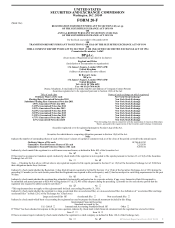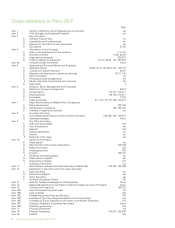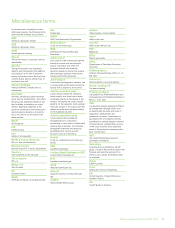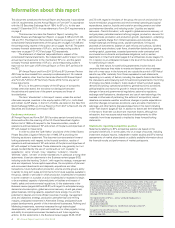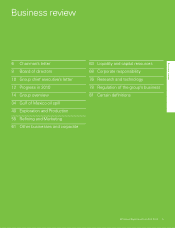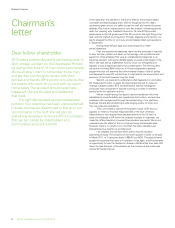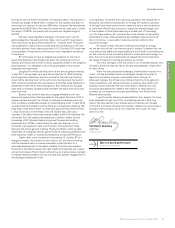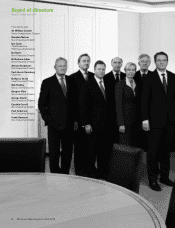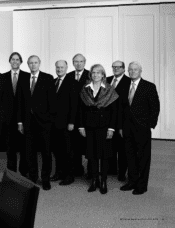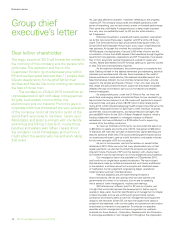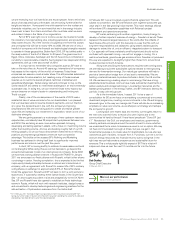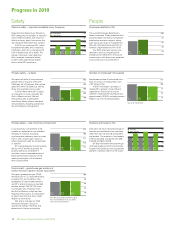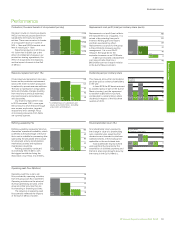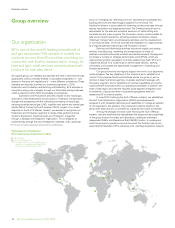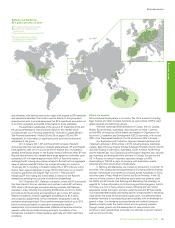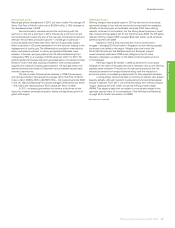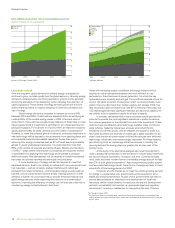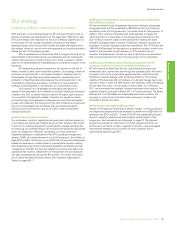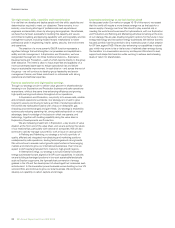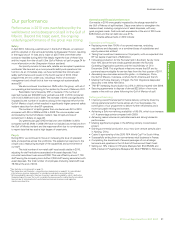BP 2010 Annual Report Download - page 13
Download and view the complete annual report
Please find page 13 of the 2010 BP annual report below. You can navigate through the pages in the report by either clicking on the pages listed below, or by using the keyword search tool below to find specific information within the annual report.
Business review
Business review
we are reviewing how we incentivize and reward people. And to think hard
about what was previously unthinkable, we are looking further afield for
insight and wisdom. I have spent time with experts from the nuclear and
chemicals industries, and I am convinced that we in the energy industry
have much to learn from them and others. We must take what we learn
and embed it deep in the fabric of our organization.
Part of BP’s task right now is to show we can be trusted to handle
the industry’s most demanding jobs, including exploration and production in
deep water. Around 7% of the world’s oil supplies come from this source,
and we expect this will rise to nearly 10% by 2020. We are one of only a
handful of companies with the financial and technological strengths needed
to operate in these geographies. Before April 2010, BP had drilled safely in
the deep waters of the Gulf of Mexico for 20 years. The governments of
Egypt, China, Indonesia, Azerbaijan and the UK have shown confidence in
our ability to operate safely at depths, having signed new deepwater drilling
agreements with us in the second half of 2010.
It is important to remember why companies such as BP have to
take on the risks they do. Around 40 years ago, international oil companies
had access to the majority of the world’s oil reserves. Today these
companies can access a much smaller share. This still provides substantial
opportunities for value creation, but reaching many of those reserves
requires us to overcome severe physical, technical, intellectual and
geopolitical challenges. Global energy demand continues to rise, so the
world needs BP and others to meet these challenges in an environmentally
sustainable way. In doing this, we can never eliminate every hazard, but
we can become an industry leader in understanding and limiting risk.
That’s our goal.
Clearly, one of the consequences of the events of 2010 was a
substantial loss of value and returns for our shareholders. I am pleased
that we have been able to resume dividend payments, and our intention
is to grow the dividend level in line with the company’s improving
circumstances. We are now taking action to create and realize greater
value. We are increasing our investment in exploration, which is one of our
distinctive strengths.
We are gaining access to a wide range of new upstream resource
opportunities, and already have 32 project start-ups planned between now
and 2016. We are taking an even more active approach to buying,
developing and selling upstream assets, with a focus on maximizing returns
rather than building volume. And we are divesting roughly half of our US
refining capacity, so we can focus downstream investments on refining
positions and marketing businesses where we have competitive
advantage. This builds on the success BP’s Refining and Marketing
business has achieved in driving itself back to significantly improved
performance and returns over the past few years.
In short, BP is moving swiftly to address its weaknesses and build
on its strengths. While doing this we will not hesitate to go beyond the
conventional business model of an international oil company. Since 2003
we have had a strong alliance onshore in Russia with TNK-BP. In January
2011 we announced our Arctic alliance with Rosneft, which further shows
our strategy in action. Pending completiona, this is expected to be the first
major equity-linked partnership between a national and international oil
company, with an agreement with Rosneft to receive 5% of BP’s ordinary
voting shares in exchange for approximately 9.5% of Rosneft’s shares.
Under the agreement, Rosneft and BP will seek to form a joint venture to
explore and, if successful, develop three licence blocks in the South Kara
Sea – an area roughly equivalent in size and prospectivity to the UK North
Sea. BP and Rosneft have also agreed to establish an Arctic technology
centre in Russia, which will work with research institutes, design bureaus
and universities to develop technologies and engineering practices for the
safe extraction of hydrocarbon resources from the Arctic shelf.
a On 1 February 2011 the English High Court granted an interim injunction restraining BP from
taking any further steps in relation to the Rosneft transactions pending the outcome of arbitration
proceedings. See Note 6 Events after the reporting period.
In February 2011 we announced a second historic agreement. This will,
subject to completion, see BP and Reliance work together across the gas
value chain in the fast-growing Indian market. This major strategic alliance
will combine BP’s deepwater capabilities with Reliance’s project
management and operations expertise.
BP is also partnering with another organization, Husky Energy, to
develop a further important resource of energy – Canada’s oil sands. These
represent the second largest reserves in the world after the oilfields of
Saudi Arabia. We will work with this resource in a way that fits with our
long-term responsibilities and objectives, using steam assisted gravity
drainage to extract the oil, and an efficient, integrated system to transport
it. Our approach will have a relatively small footprint and should not be
confused with opencast mining – we will not engage in mining. On a
well-to-wheel basis, greenhouse gas emissions from Canadian oil produced
this way are expected to be slightly higher than those from conventional
crudes imported to North America.
Along with providing the hydrocarbons required over coming years,
we are helping to build the sustainable options needed to meet growing
demand for lower-carbon energy. Our natural gas operations will help to
provide a lower-carbon bridge from oil and coal to renewables. We are
building a material business to produce biofuels in Brazil, the US and the
UK. We are becoming a leading player in wind energy. We have a long-
established solar business. And we have made substantial investments in
carbon-capture-and-storage technology. Lower-carbon resources are the
fastest-growing sector in the energy market, and BP intends to develop its
portfolio in step with this growth.
As to the immediate future, I expect 2011 to be a year of
consolidation for BP, as we focus on completing our previously announced
divestment programme, meeting our commitments in the US and bringing
renewed rigour to the way we manage risk. There will also be an increasing
emphasis on value over volume, as we sharpen our strategy and reshape
the company for growth.
Looking back over recent days and months, our thoughts return to
the men who lost their lives, to those who were injured and to the
communities hit hard by the spill. I have heard people ask “Does BP ‘get
it’?” Residents of the Gulf, our employees and investors, governments,
industry partners and people around the world all want to know whether
we understand that a return to business-as-usual is not an option. We may
not have communicated it enough at times, but yes, we get it. Our
fundamental purpose is to create value for shareholders, but we also see
ourselves as part of society, not apart from it. Put simply, our role is to find
and turn energy resources into financial returns, but by doing that in the
right way we can help create a prosperous and sustainable future for
everyone. This is what people rightfully expect of BP. This is what will
inspire and drive us over the next 12 months and far into the future.
Bob Dudley
Group Chief Executive
2 March 2011
More on our performance
bp.com/annualreport
BP Annual Report and Form 20-F 2010 11


